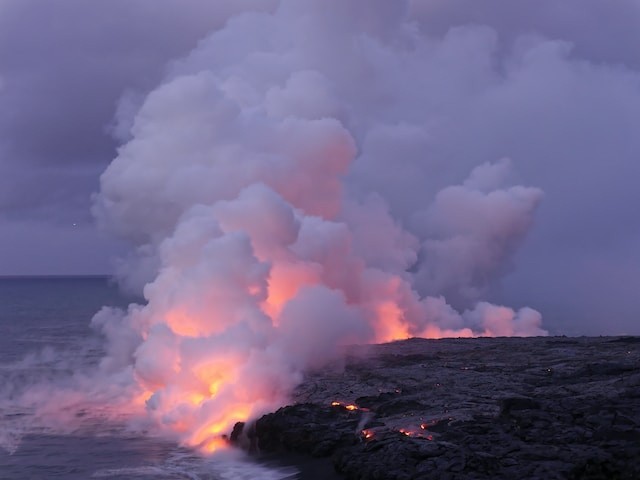A volcano in Alaska's Aleutian Islands erupted on Friday, July 15, 2023, sending a large ash cloud into the air that triggered warnings to pilots about potentially dangerous conditions.
The eruption of Shishaldin Volcano, one of the most active in the region, was part of an ongoing volcanic activity that started on July 11, according to the Alaska Volcano Observatory.
How frequently do volcanic eruptions occur in Alaska?

According to the Alaska Volcano Observatory, on average there are 1.7 volcanic eruptions a year in Alaska, as per the USGS.
In Alaska, there are volcanoes all over the place, from the Aleutian Arc to the Wrangell Mountains, as well as anciently in the interior and to the west of the Seward Peninsula.
The observatory monitors and responds to eruptions, volcanic unrest or suspected unrest, and seismic events at 15 volcanic centers in Alaska.
The most notable volcanic activity in 2023 consisted of eruptions at Pavlof and Bogoslof volcanoes, which produced significant ash clouds that affected regional air travel.
The eruption of Shishaldin Volcano and its ash cloud
Shishaldin Volcano is located on Unimak Island, about 700 miles (1,127 kilometers) southwest of Anchorage, as per The Guardian.
It is a symmetrical cone-shaped volcano with a height of 9,373 feet (2,857 meters) and a base diameter of about 10 miles (16 kilometers). It has a funnel-shaped crater that often emits steam and occasional ash.
The volcano began erupting on July 11, producing lava flows within the summit crater. On Friday, July 15, around 5 a.m. local time, it had a significant explosion that produced an ash cloud that reached up to 7.5 miles (12 kilometers) above sea level and drifted south over the Pacific Ocean. A second smaller explosion occurred later that day.
The Alaska Volcano Observatory reported that the eruption was moderate in intensity and duration, with ashfall drifting toward the ocean.
The observatory also said that seismic activity at the volcano decreased after the explosions, but that more eruptions could occur with little or no warning.
The impacts and risks of volcanic ash for aviation and communities
The National Weather Service issued an advisory due to the drifting ash cloud, which can pose serious hazards for air traffic, as per ABCNews.
Volcanic ash is composed of fine particles of rock and glass that can damage aircraft engines, windows and instruments. It can also reduce visibility and cause respiratory problems for passengers and crew.
The weather service advised pilots to avoid flying near or through the ash cloud, and to report any volcanic ash encounters to authorities.
The Federal Aviation Administration also issued a notice to airmen about the volcanic activity and its potential impacts on flight operations.
The nearest community to Shishaldin Volcano is False Pass, located about 25 miles (40 kilometers) northeast of the volcano.
The village has about 65 residents who rely on fishing and subsistence hunting for their livelihoods. The village administrator said that they did not experience any ashfall or other effects from the eruption, but that they were monitoring the situation closely.
The Alaska Volcano Observatory said that it will continue to observe Shishaldin Volcano and provide updates on its status.
The observatory also said that there are at least 26 confirmed eruptions at Shishaldin Volcano since 1824, most of which are small. However, a 1999 eruption produced an ash cloud that reached up to 8.5 miles (14 kilometers) above sea level.
© 2025 NatureWorldNews.com All rights reserved. Do not reproduce without permission.





